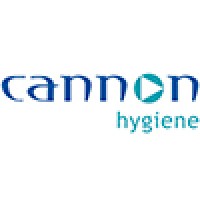
Cannon Hygiene International
Cannon Hygiene is a leading provider of total washroom services, specialising in washroom hygiene. Today the company’s broad experience and extensive services and products serve the diverse needs of a wide range of businesses, from manufacturing and retail, through to the service, aviation and leisure sectors. Cannon Hygiene operates in over 40 countries worldwide and is currently expanding rapidly through a successful franchising operation. It is part of the OCS Group of companies, which employs over 90,000 people worldwide. As innovators in the industry, Cannon Hygiene is known for its commitment to quality and the on going development of products, services and people. We strive to distinguish ourselves from our competitors by offering the same high level of service excellence worldwide. Cannon Hygiene's Imagine Range, winner of the Good Design Award 2017. For more information visit www.cannonhygieneinternational.com and follow @Cannon_Hygiene on Twitter. ‘Cannon Hygiene – we aim to be the most hygienic washroom service in the world’






